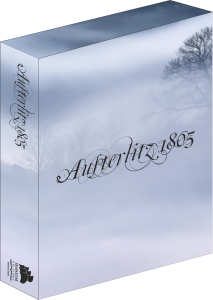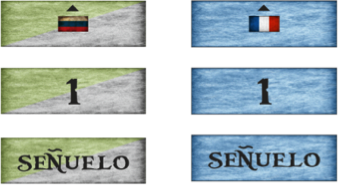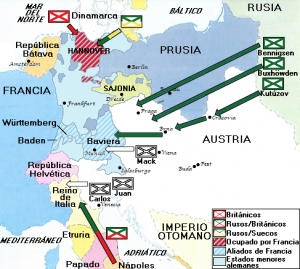Now you can find the button of Late Pledge in the Kickstarter campaign, with which, if you missed it, you can still get the game at a very interesting price.
LATE PLEDGE

Now you can find the button of Late Pledge in the Kickstarter campaign, with which, if you missed it, you can still get the game at a very interesting price.

The fog does not allow to see more than a few meters in front of you. It drowns all the sounds, wrapping the Altos of the Pratzen in a silence like a tomb. You fear that the fog hides a French army that assaults your position. Maybe your fears are being fulfilled…
At Austerlitz 1805 we could not forget the fog that covered the battlefield during the beginning of the contest. That allied fog of Napoleon that made the clear vision of the enemy impossible.
Our game incorporates fog during the first shifts, with a variable duration, so you can plan your strategy in advance knowing it will last between 3 and 7 shifts before you start to dissipate.
During the fog, the detection capacity of the units is reduced and you will not be able to know if the "chits" in front of you are lures or real units until you get very close to them.

The true composition of each training will be hidden in the strategic map of each player, in numbered boxes, to place on the map in case the unit is revealed.


Click here and go to the Kickstarter
In this way, with a minimum number of rules, it adds great tactical depth on the map, having to adapt your battle plans to some troops that you do not know the exact composition.
With this entry we give reference to the next title that we will edit: Austerlitz 1805: The masterpiece of Napoleon. Work of two Spanish authors: Raúl Bellido and Juan Carlos Lozano.
Austerlitz 1805, the masterpiece of Napole
ónQue Napoleon Bonaparte marked a time in the history of Europe is well known. Not in vain today we continue to call as Napoleonic Wars the set of conflicts that occurred during the early NINETEENTH century.

That was a controversial figure no doubt, but surely everyone will come to coincide at one point: Napoleon was a military genius. He participated in dozens of encounters, multiple mass battles, almost always reaping sound victories. Among them the most relevant and magnificent was the Battle of Austerlitz.

More than two centuries after the battle finally publishes a book written by Spanish authors about that decisive moment in European history. The bibliography used has been selected to accommodate all points of view, dealing with German, Russian, Italian, British, French and, of course, Spanish texts.
The visual component has been maximized, including more than 25 maps detailing the smallest details of the strategic development of the campaign and, above all, the course of the battle itself. To add to all this more than a dozen new illustrations that show the uniforms of the participating troops, facilitating the historical immersion.

A complete work to narrate the definitive battle, the masterpiece of the Emperor.